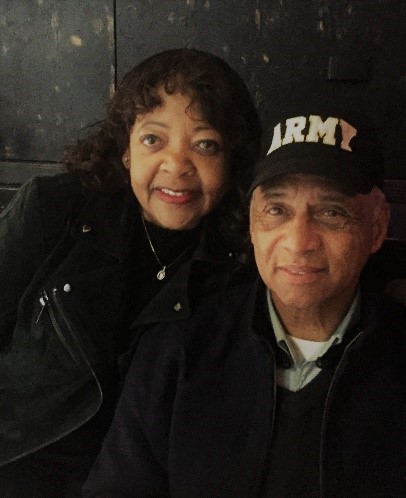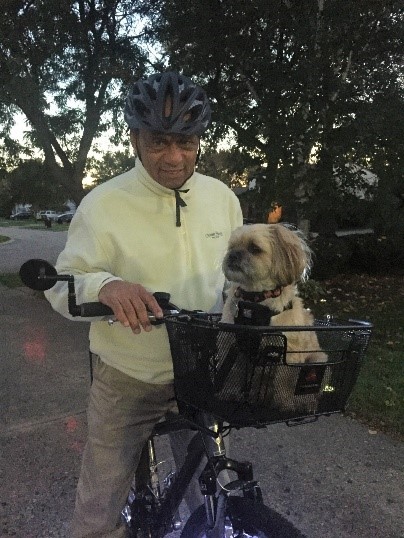Consumer Involvement




Army Veteran James “Jim” Scott was traveling with his son, a professional musician, when he first noticed blood in his urine. He brushed it off and made a mental note to see his primary care physician. Managing his son’s music career was a full time gig, and his symptoms didn’t seem particularly dire. When he finally got an appointment, his doctor diagnosed him with a routine urinary tract infection and sent him on his way with a prescription for antibiotics, but the blood persisted. Finally, Jim was sent to a urologist who revealed something far more serious—over 20 tumors had grown in his bladder, with one the size of an orange.
Jim sat in a room with his wife and their two children when his urologist first delivered the news. You have cancer. Those three words sucked the air out of the room. As his family sat in stunned silence, Jim turned to them and said, “I have cancer. It’s just a challenge. What’s next?”
Over 80,000 people are diagnosed with bladder cancer in the U.S. each year, and it is the fourth most common cancer in men. Symptoms include blood in the urine, painful and frequent urination, and difficulty emptying the bladder. Jim began treatment in May 2015. He underwent a transurethral resection of bladder tumor (TURBT) procedure, but was told by his oncologist that his chance for recurrence was very high without removal of the entire bladder. He was given the option to undergo a neobladder urinary diversion procedure, during which the surgeon removes the diseased bladder and builds a new one by forming a section of the small intestine into a small pouch. The neobladder connects to the urethra, so patients can urinate normally without the need for an external collection bag. This procedure allows survivors to remain active after surgery and maintain a higher quality of life.
Prior to his neobladder surgery, Jim was approached by his oncologist with an opportunity to participate in a pilot exercise intervention program. There were some data to show that improving physical fitness before neobladder surgery could improve outcomes. All Jim needed to hear is that his participation in the program would provide valuable data that could help others down the road. He was all in.
When Jim asked how long the average hospital stay was for the neobladder surgery, his doctor said 7-10 days. Jim looked at him and said, “I’m going to be out in 4.” Never one to back down from a challenge, Jim worked with a trainer doing weights, cardio, and Kegel exercises for 6 weeks prior to surgery, while also undergoing chemotherapy. He successfully underwent neobladder surgery and walked out of the hospital only 5 days later.

Honored to Serve
After his successful surgery, Jim looked for ways to use his experience and knowledge to help others affected by bladder cancer. He always felt called to serve and lives with the understanding that, “to whom much is given, much will be required.” His diagnosis reignited a passion to serve that he hadn’t felt since his time in the Army. He became actively involved with the Bladder Cancer Advocacy Network (BCAN), which is devoted to advancing bladder cancer research and supporting patients and survivors. He also became an ambassador for Gilda’s Club Detroit, which offers programs and activities for cancer survivors and their families, friends, and caregivers. His participation in these organizations led to opportunities for him to travel across the U.S. educating others on the current state of bladder cancer research, including patient care and research gaps and areas for improvement.
His involvement with BCAN, passion for advancing bladder cancer research, and unique perspective as a survivor led to a nomination to serve as a consumer reviewer for the Congressionally Directed Medical Research Programs, Peer Reviewed Cancer Research Program (PRCRP). Jim jumped at the opportunity to support Service members, Veterans, and their families living with bladder cancer and to serve his country again.
As a PRCRP consumer reviewer and bladder cancer survivor, Jim served as a voice for the bladder cancer community. His intimate knowledge of the current treatment options and outcomes provided perspectives on how research projects impact patients.
Jim remembers that his first time attending a peer review meeting felt a little overwhelming, and he questioned how he could make a difference with his limited scientific background. He quickly learned after his first session that the PRCRP peer review relies on scientists and survivors working together, each bringing their own expertise to best evaluate which scientific projects will make the most impact in patients’ lives. He noted that, “when consumers spoke, scientists really listened.”
If Jim could impart one message to fellow survivors and advocates, it would be to “continue to bring about an awareness, educate, and participate in finding a cure.” He implores others to use their voice, join support groups, and volunteer. In his words, “You don’t have to be a medical expert or a doctor” to make a difference.
Last updated Monday, March 10, 2025














